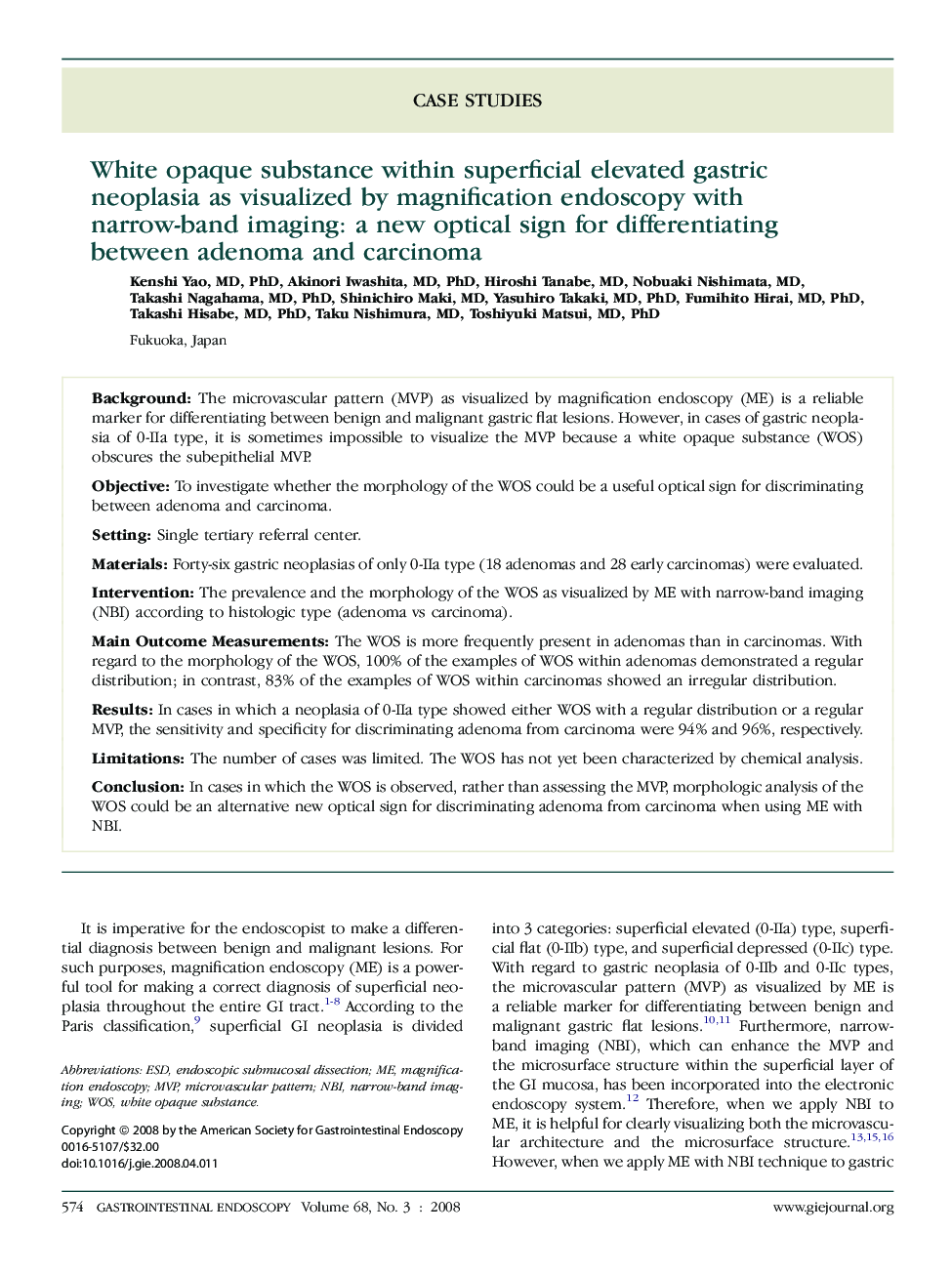| Article ID | Journal | Published Year | Pages | File Type |
|---|---|---|---|---|
| 3306910 | Gastrointestinal Endoscopy | 2008 | 7 Pages |
BackgroundThe microvascular pattern (MVP) as visualized by magnification endoscopy (ME) is a reliable marker for differentiating between benign and malignant gastric flat lesions. However, in cases of gastric neoplasia of 0-IIa type, it is sometimes impossible to visualize the MVP because a white opaque substance (WOS) obscures the subepithelial MVP.ObjectiveTo investigate whether the morphology of the WOS could be a useful optical sign for discriminating between adenoma and carcinoma.SettingSingle tertiary referral center.MaterialsForty-six gastric neoplasias of only 0-IIa type (18 adenomas and 28 early carcinomas) were evaluated.InterventionThe prevalence and the morphology of the WOS as visualized by ME with narrow-band imaging (NBI) according to histologic type (adenoma vs carcinoma).Main Outcome MeasurementsThe WOS is more frequently present in adenomas than in carcinomas. With regard to the morphology of the WOS, 100% of the examples of WOS within adenomas demonstrated a regular distribution; in contrast, 83% of the examples of WOS within carcinomas showed an irregular distribution.ResultsIn cases in which a neoplasia of 0-IIa type showed either WOS with a regular distribution or a regular MVP, the sensitivity and specificity for discriminating adenoma from carcinoma were 94% and 96%, respectively.LimitationsThe number of cases was limited. The WOS has not yet been characterized by chemical analysis.ConclusionIn cases in which the WOS is observed, rather than assessing the MVP, morphologic analysis of the WOS could be an alternative new optical sign for discriminating adenoma from carcinoma when using ME with NBI.
